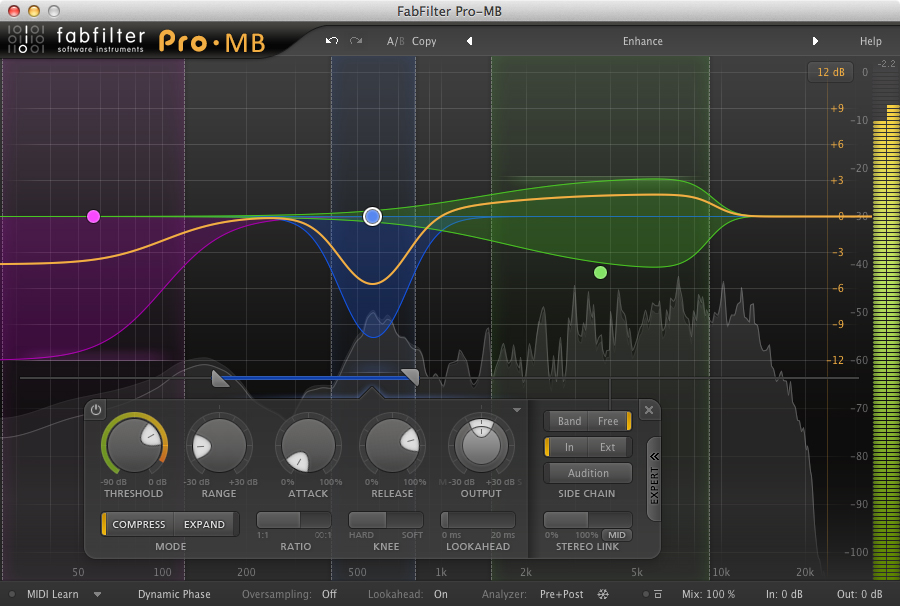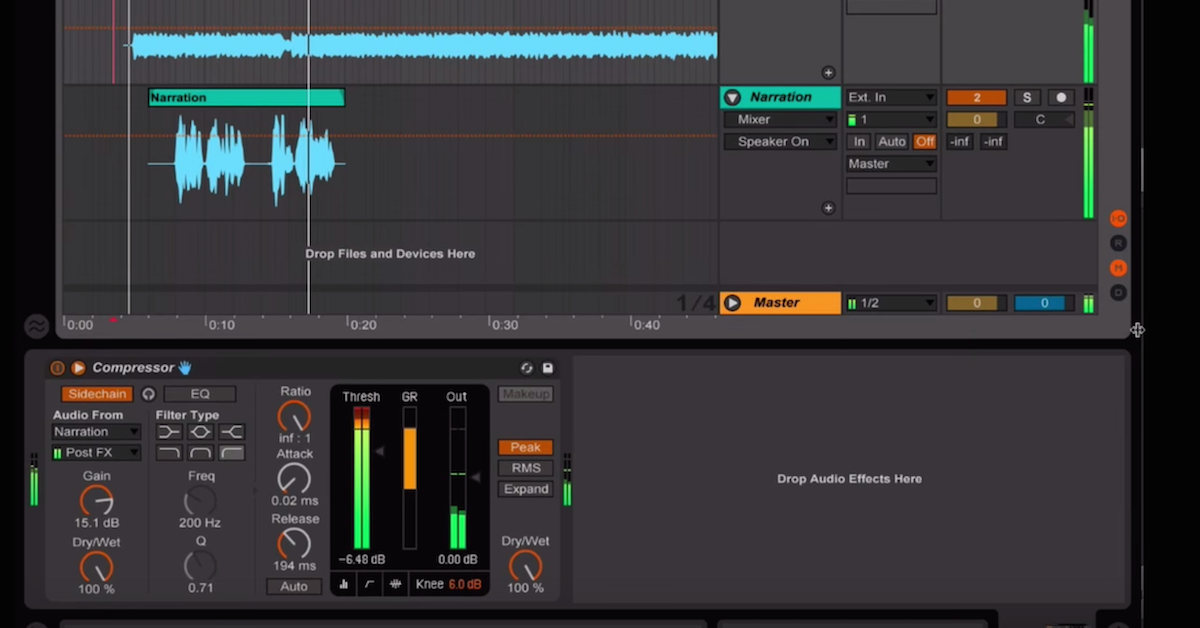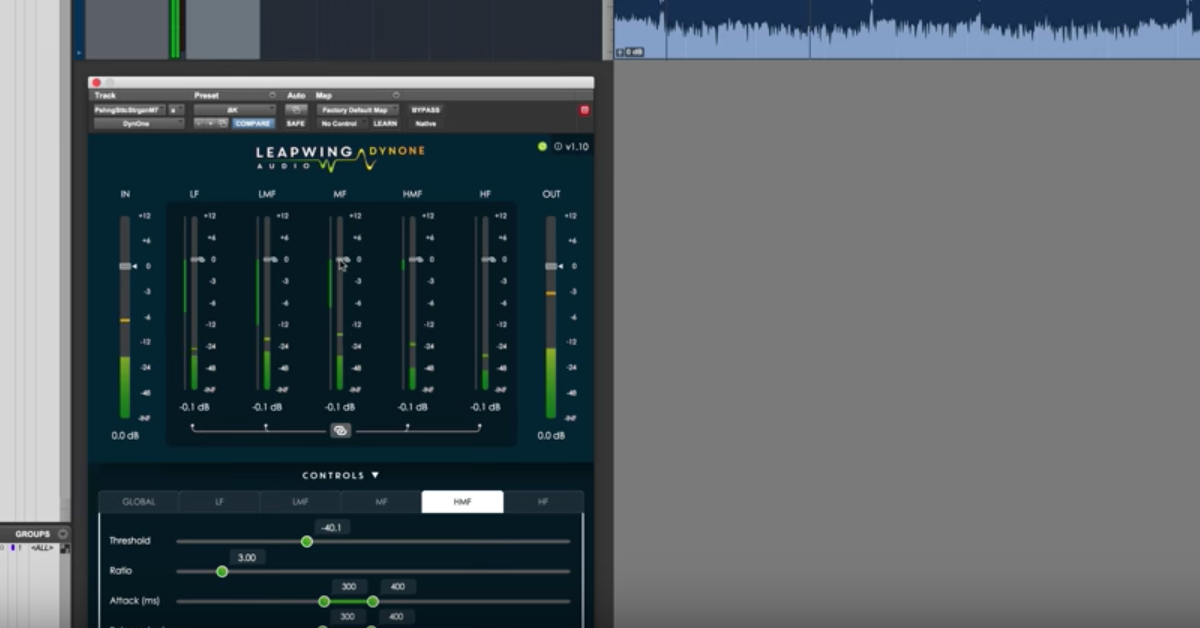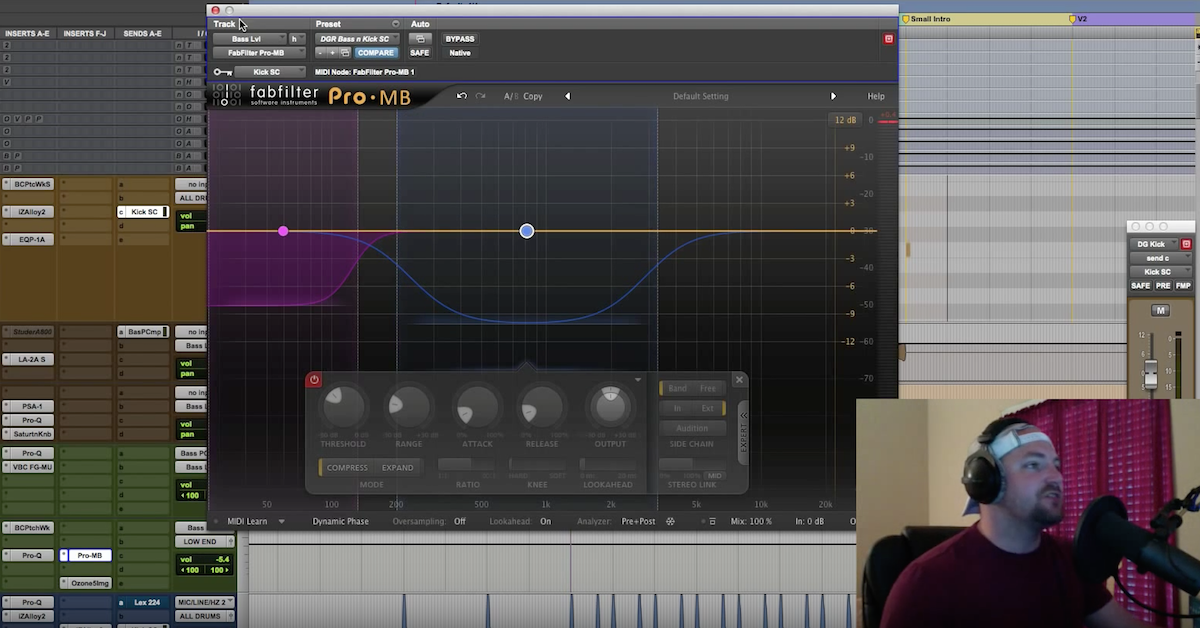Review: FabFilter Pro-MB Multiband Compressor
Article Content
The power of multi-band compression is the ability to do finely tuned audio dynamics processing based on a carefully parsed set of conditions. The real test of any particular multi-band compressor (whether hardware or plug-in) is its ability to provide the user with a truly complete set of parameters, and responsive processing.
I’ve been trying multi-band compressor plug-ins since TC’s Master X came out in the late 1990’s. I could best summarize my experiences by noting that I don’t have a favorite multi-band compressor plug-in. In fact, I’m more likely to reach for other options that don’t require huge sonic sacrifices or nonsensical interfaces.
Evaluating FabFilter’s Pro MB has been a welcome departure from 15 years of multi-band disappointment. The Pro MB is definitely my new standard for judging feature set and usability in multi-band compressor plug-ins.
Clean Interface
One of my favorite things about the Pro MB is that a fresh instance of the plug-in is free of any active processing bands. FabFilter took an opt-in approach to applying detailed dynamics processing, which is smart and rare.
The main plug-in window is a knob-free spectrum analyzer that displays input and/or output levels across a frequency spectrum, and overlays scalable range and gain reduction level curves. As you mouse over the display, a + button appears, allowing you to create a processing band centered around the desired frequency.

Each processing band can be easily resized by dragging its boundaries in the color-coded display. The low and high crossover points of each band feature independent slope controls, each ranging from 6 to 48 decibels per octave. Pro MB can facilitate up to 6 processing band, but thankfully, only if you want them.
Responsive Processing
A single click inside a processing band reveals a hovering panel of basic band controls. The basic controls include the typical dynamics processor parameters like Threshold, Attack and Release, Ratio, and Output Gain.
The specific process of each band is controlled by the combination of the Compress/Expand button, and the Range control:
- Compress with a negative Range value: output gain is reduced as input gain rises above the threshold.
- Expand with a negative Range value: output gain is reduced as input gain falls below the threshold
- Compress with a positive Range value: output gain is increases as input gain falls below the threshold.
- Expand with a positive Range value: output gain is increased as input rises above the threshold.
The less common upward compression and expansion functions can be used with subtlety thanks to Pro MB’s band-specific Knee control and the ability to select very low ratios.
I was able to gently add dynamic detail back to an over-compressed vocal recording by using a soft knee setting and a 1.5:1 ratio. After fine-tuning the crossover slope I was very impressed with the realism of the result.
Finer Details
The basic band control window can be expanded to reveal some ‘expert’ features that, in my opinion, make Pro MB an exceptional processor.
Band-specific Internal/External side chain selection: Instead of refining the processing conditions based upon the plug-in input signal, an external signal source can be selected. Each band can be independently switched between internal and external side chain sources, but all external selections share a global external key source.
I used this feature very successfully to setup a vocal reverb that dynamically darkened as the vocal track got louder. Pro MB was instantiated after the reverb on an auxiliary channel. I set up a moderate ‘compress highs’ scheme above 2kHz, but used a clean vocal buss as the external side chain source. By manipulating the threshold, I was able to easily establish the dynamic shift from quiet, more open vocals to a more forceful, less reflected sound.
Band-specific Band/Free side chain selection: The default Band selection maintains the typical link between the frequency band that triggers processing, and the frequency band to which the processing is applied. Selecting Free divorces that link, and allows the user to establish a secondary frequency range for the side chain. If there’s a single killer feature in Pro MB, this is it.
While listening to a stereo mix file, I decided that the mix sounded muddy (around 200Hz) when the kick drum was at its loudest – otherwise it was just fine. I set up a low-midrange compression band to do a little gentle gain reduction during the loudest passages. OK, but the threshold reacts to level, not apparent loudness.
By selecting a Free side chain, I was able to slide the triggering frequency range lower, to a more dynamic range centered around 90Hz. This gave me much more musical correlation between the audio that sounded loud, and when the low midrange was slightly compressed.
This is a powerful (and well-established) technique with broadband compressors. So much so that I typically opt out of using a multi-band compressor in favor of the more subtle broadband compressor with a band-limited side chain. Having this amount of side chain control in a multi-band compressor plug-in is seductive. I can imagine habits changing.
Band-specific Stereo Link / Mid/Side Only: The Stereo Link fader allows the user to establish a percentage of correlation between the gain reduction applied to left and right channels of stereo input signals. A complete stereo link (100%) is the mid-point on that control. So what happens beyond 100%?
There is also a Stereo Link Mode button which establishes whether the process will be proportionally applied to the Mid (in-phase or ‘mono’ signal components) or Side (differential components) in the range beyond the 100% Stereo Link setting. At its maximum, processing is only applied to sum or difference components.
This is a lot of control, but very useful for tasks like aggressive bass treatment, stereo dialog processing, faux mix recall, etc. It’s incredibly powerful to be able to vary both stereo linking and mid/side process application on a band-specific basis.
Tech Specs
FabFilter’s Pro-MB is available for Mac OS X and Windows in 64-bit and 32-bit VST, VST3, AU, AAX Native, and AudioSuite formats, as well as 32-bit RTAS. The licensing scheme is iLok-free.
Pro MB features both Dynamic Phase and Linear Phase processing modes. The default Dynamic mode is capable of zero static phase distortion as well as zero-latency operation. If latency is not a concern, oversampled processing and lookahead detection are also available.
Summary
There are certain frequency-specific dynamics problems that crop up in the production process that can be mitigated with EQ or compression, but require a compromise between effectiveness and unintended results. In these instances, multi-band compression can be a useful tool in experienced hands. Unfortunately, many multi-band compressor plug-ins withhold or conglomerate features that would otherwise be the key to achieving a great result.
The FabFilter Pro MB provides everything that I would have asked for in a complete multi-band compressor feature set, and even introduces a few additional luxuries. Many features like the Knee control, crossover slopes, and Mid/Side functionality are global parameters on other multi-band compressor plug-ins, if they’re available at all.
The clean, readable Pro MB interface presents an unrivaled amount of band-specific control over the dynamics process and the conditions that trigger it.
To learn more and purchase the Pro- MB, visit the FabFilter website.




